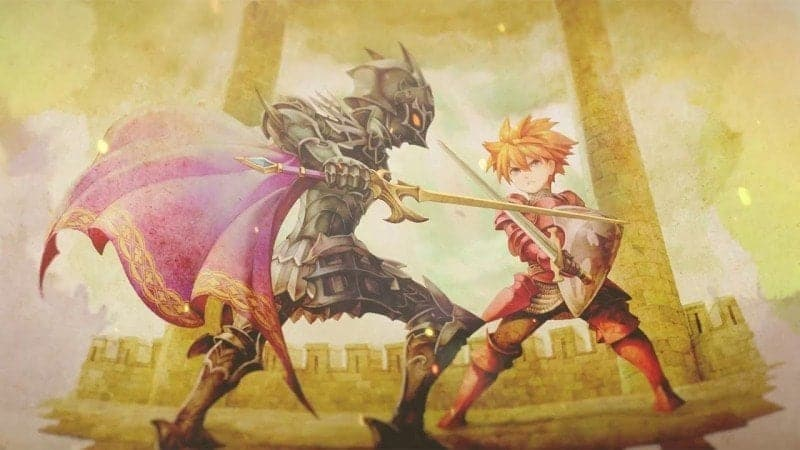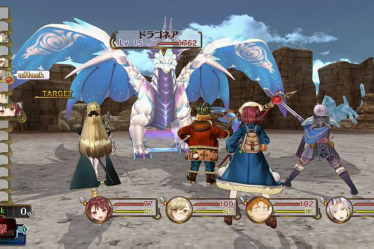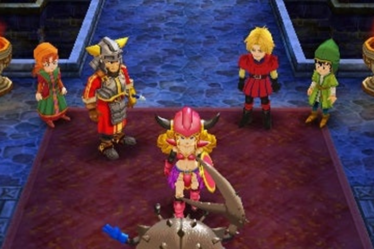
This article was originally published in Italian on Thegamesmachine.it in 2016.
Under the cover of darkness that has settled over the PlayStation Vita release landscape, Square Enix has made Adventures of Mana available exclusively in digital format. This marks the second remake of the Mana series’ progenitor, which first arrived in Europe on the Game Boy in the ’90s under the title Mystic Quest. Following the full-fledged reboot seen on the Game Boy Advance under the name Sword of Mana, the adventures of Sumo and Fuji return in a remake that stays closer to the original, now presented in a fresh, polygonal style with a bird’s-eye view.
The narrative premise, serving as a thin thread tying the adventure together, follows the two protagonists as they journey from dungeon to dungeon in a world teetering on the brink of apocalypse (what a surprise). The only hope lies with the ethereal heroine prominently featured in the promotional artwork.
The meeting between Fuji and the protagonist—a warrior who has dedicated his life to mastering the sword—takes place immediately after an escape from a castle, whose enigmatic ruler appears closely tied to the sinister forces threatening the kingdom’s fate and the world’s future. Without delay, Adventures of Mana thrusts players into the heart of the action, offering an exploration model with grid-based maps reminiscent of the first The Legend of Zelda. However, it enriches this formula with elements borrowed from the Final Fantasy series (of which Mana was originally a spin-off), such as the ability to level up the protagonist into one of Square’s classic character classes.
Sumo wields a variety of weapons to carve his way through a monster-infested world, each essential for unlocking the paths leading toward the inevitable finale. In essence, it’s a very traditional action-adventure game, so faithful to the formula of the 1990–2000 era that it’s nearly identical to the original, save for some minor script adjustments.
Above all, Adventures of Mana is a love letter to fans of the era and should be approached as such—a charming celebration of outdated mechanics and gameplay systems that today would barely scrape by as passable. It’s no wonder that Square Enix showed interest in releasing it on the PS Store only after a significant social media campaign, with players rallying through hashtags and retweets.
Naturally, the price of adhering so closely to such an “ancient” production makes Adventures of Mana unsuitable for anyone unwilling to accept retro logic: backtracking and random enemy spawns—particularly the latter—stand out as some of the game’s biggest issues. On more than one occasion, I was met with a game-over screen simply because an enemy spawned right in my path as I moved through the map.
Ironically, the game’s biggest flaws stem from its modern elements. On PS Vita, it feels like a lazy port of a mobile title, complete with a touch interface and large, non-removable icons. This is a shame, given that the game was originally designed for portable consoles and should have been practically perfect on the Vita. The only contemporary feature I found genuinely useful was the auto-save, triggered each time you enter a new “grid” on the map. This feature, similar to the auto-saving in recent HD ports of Final Fantasy games on PC, mitigates the frustration caused by sudden deaths due to enemy spawns, allowing you to quickly resume from where you fell—often at the hands of unavoidable bugs!
On the technical side, the soundtrack is undoubtedly splendid, crafted by the ever-inspired Kenji Ito (known for the SaGa series and Sword of Mana). It’s offered in both chiptune and a beautifully orchestrated version. Visually, however, the game reflects its mid-budget mobile roots, with rudimentary polygonal geometry for the environments and a super-deformed art style used to characterize the otherwise expressionless protagonists.
In short, Adventures of Mana is a game developed with little attention to production values, where you might even need to restart due to sudden freezes or infinite map-loading screens. It’s far from what you’d expect as a celebration of the Mana series’ legacy (or Seiken, as it’s known in Japan).
Ultimately, Adventures of Mana is an enjoyable product despite its low-budget nature, aimed at fans of vintage action RPGs or those with fond memories of the beloved Mystic Quest for Game Boy. That said, expectations for a game meant to celebrate the series’ 25th anniversary were undoubtedly higher. Clearly, Square Enix isn’t as invested in the series as its loyal fans.


